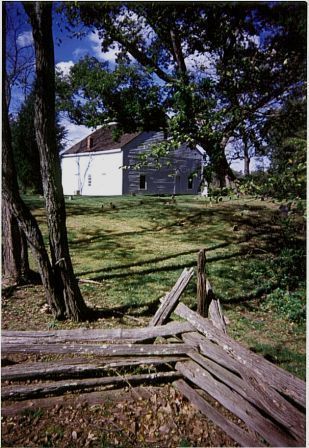Not all military activity ceases during these holidays. In northern Virginia today and the days following, the Frying Baptist Church, located near the Maryland state line in an area that is a hotbed of activity during the war years, finds itself in the midst of skirmishes.
John S. Moseby, Confederate cavalry scout for General J.E.B. Stuart and the leader of a notorious group of partisan rangers, is known to hole in the vicinity of the Frying Pan meeting house. Having recently obtained his own command, Moseby rendezvouses with Stuart this month near the church house, requesting to remain in the area in order to disrupt Union Army shipments of materials once the 1st Virginia Cavalry settles into winter camp.
Today, almost exactly a year after a prior skirmish near the church, Union cavalry come in contact with Confederate forces at the Frying Pan church, which has been designated by the Union Army as a southernmost point of a cavalry picket line designed to protect Washington, D.C. The skirmish, lasting three days, results in the Confederate forces being forced to retreat. Federal forces take up station at the church, and in the months ahead a number of minor skirmishes occur on the grounds and in the vicinity of the Frying Pan meeting house, testifying to the importance of the area to both sides. Not surprisingly, the church building suffers damage from the encampments and skirmishes during the war.
Source: Debbie Robison, “Northern Virginia History Notes: Frying Pan Baptist Meeting House” (link)



